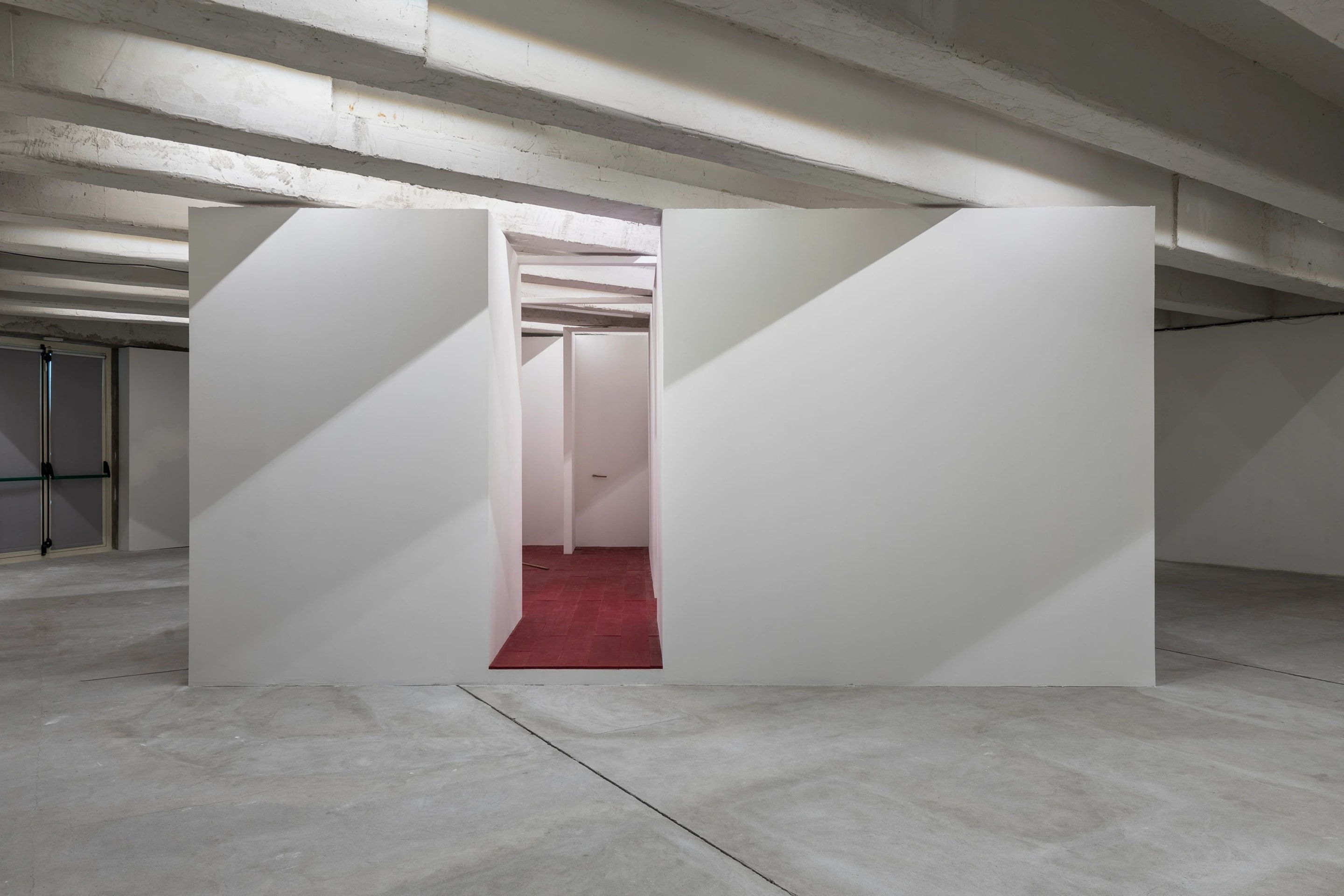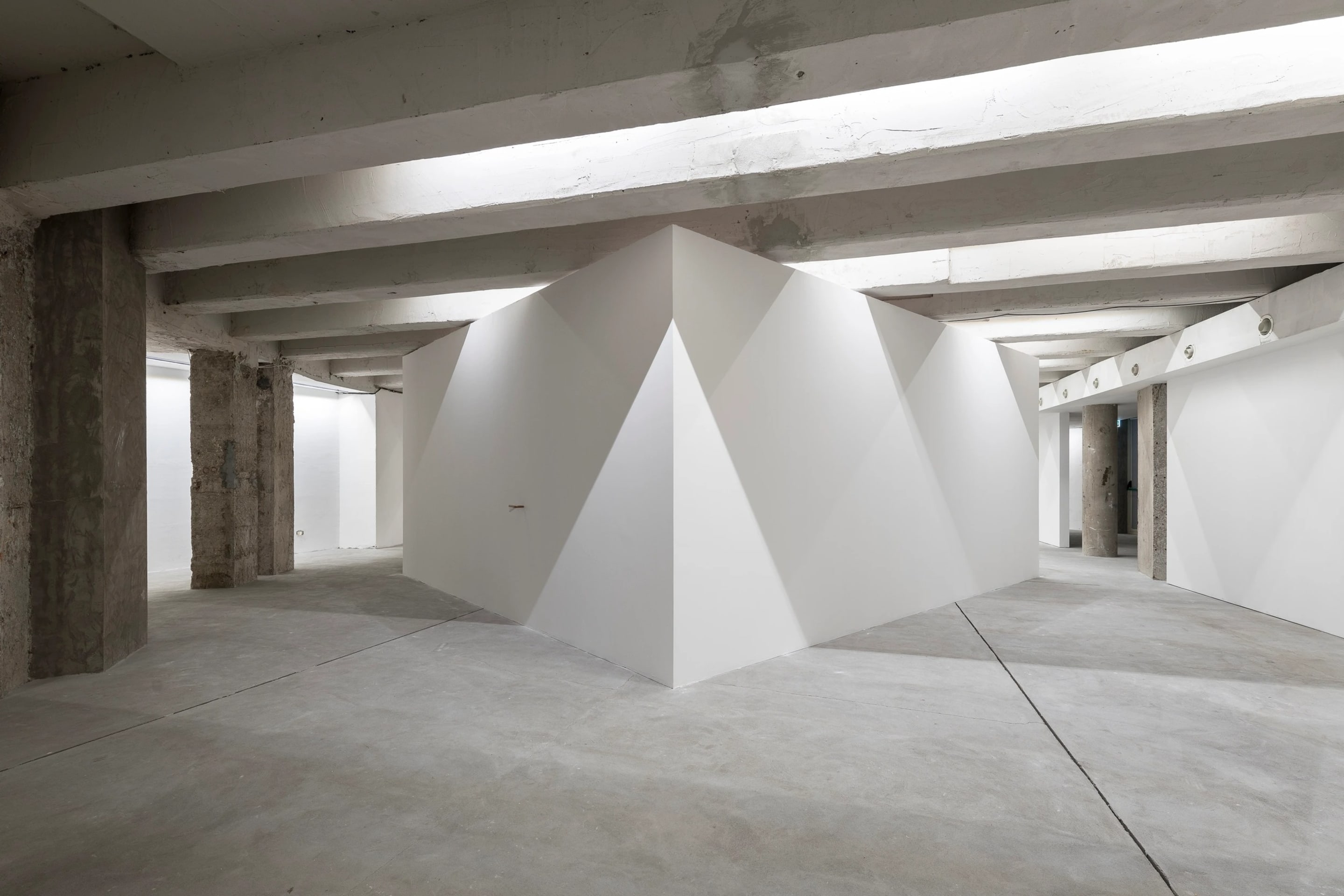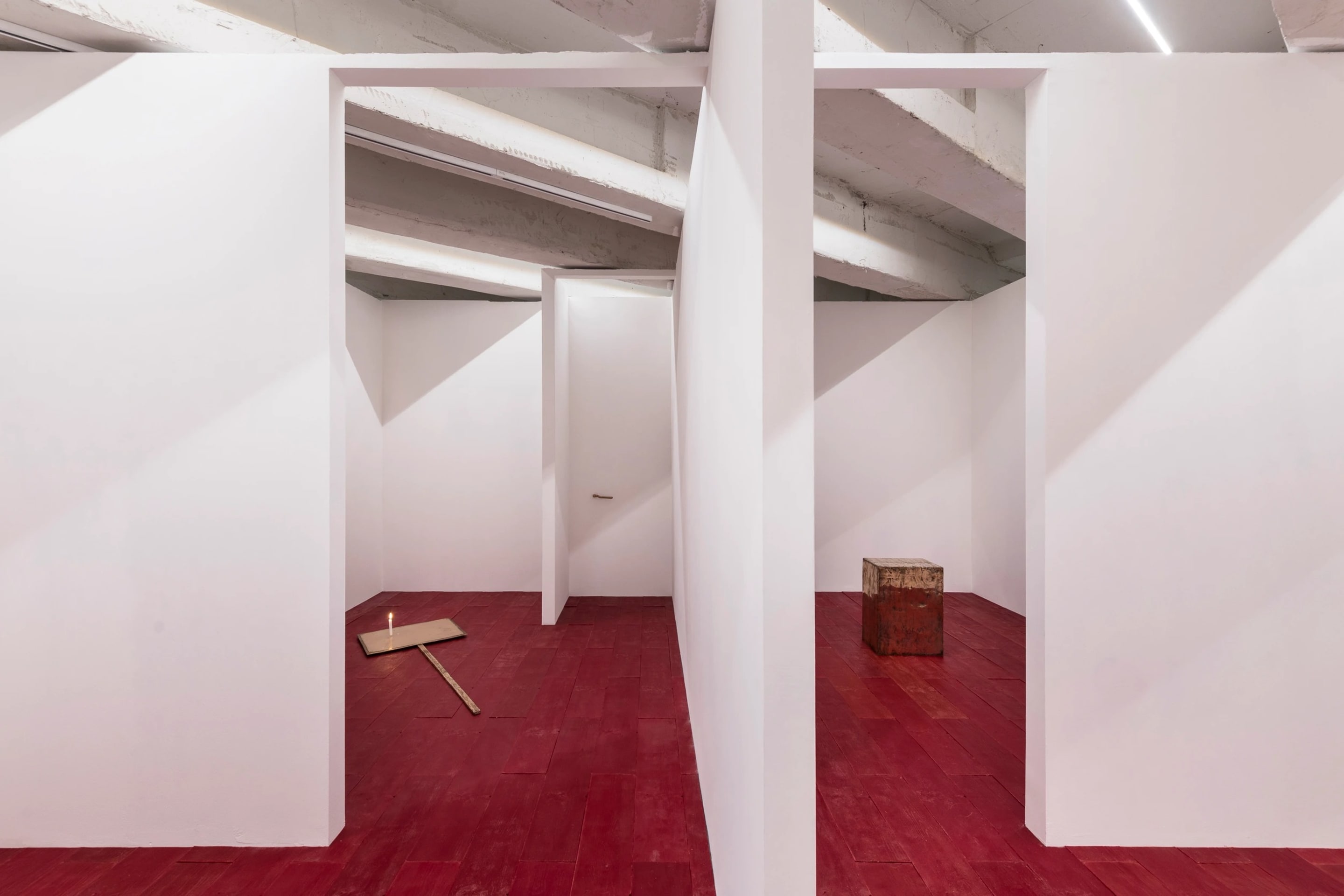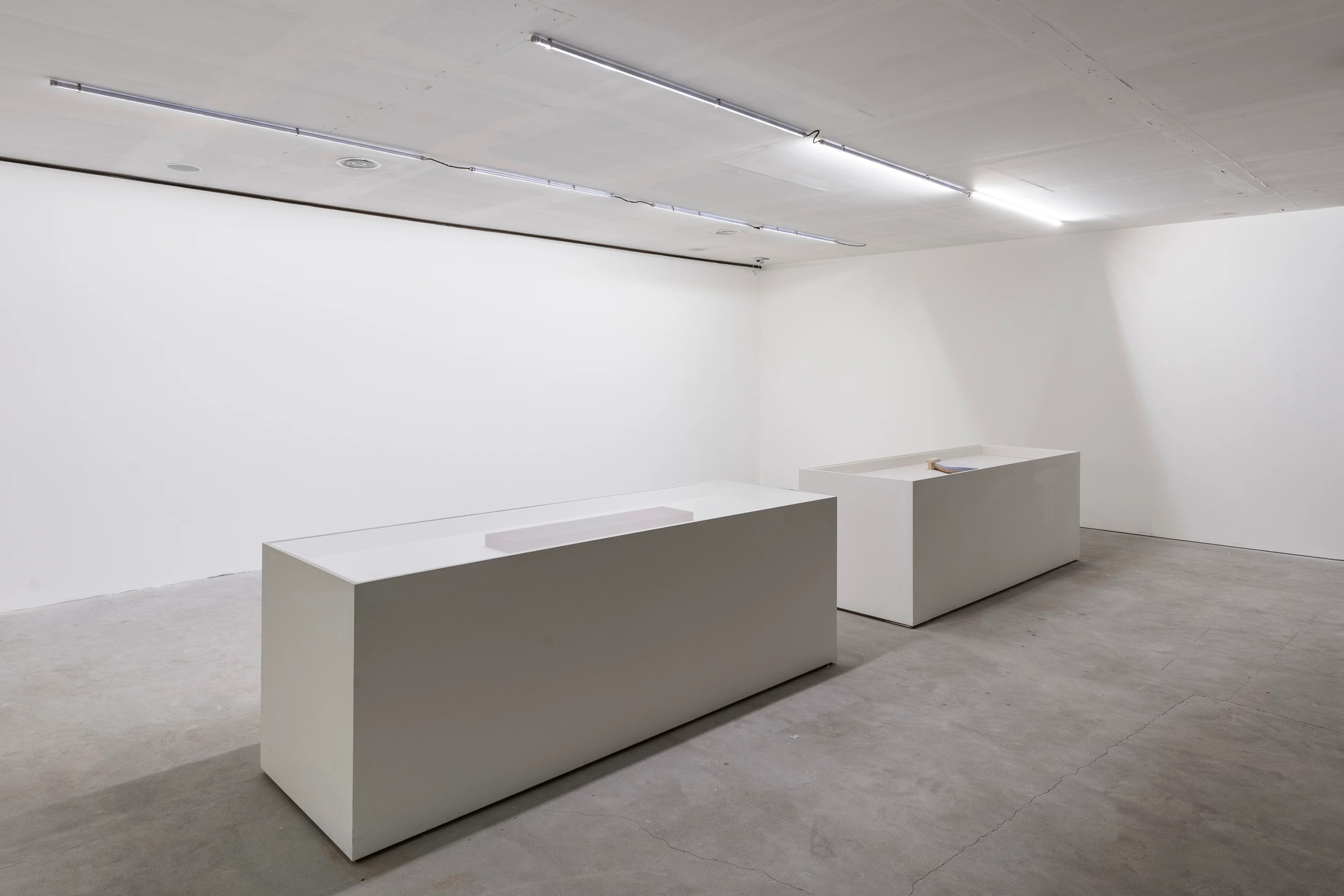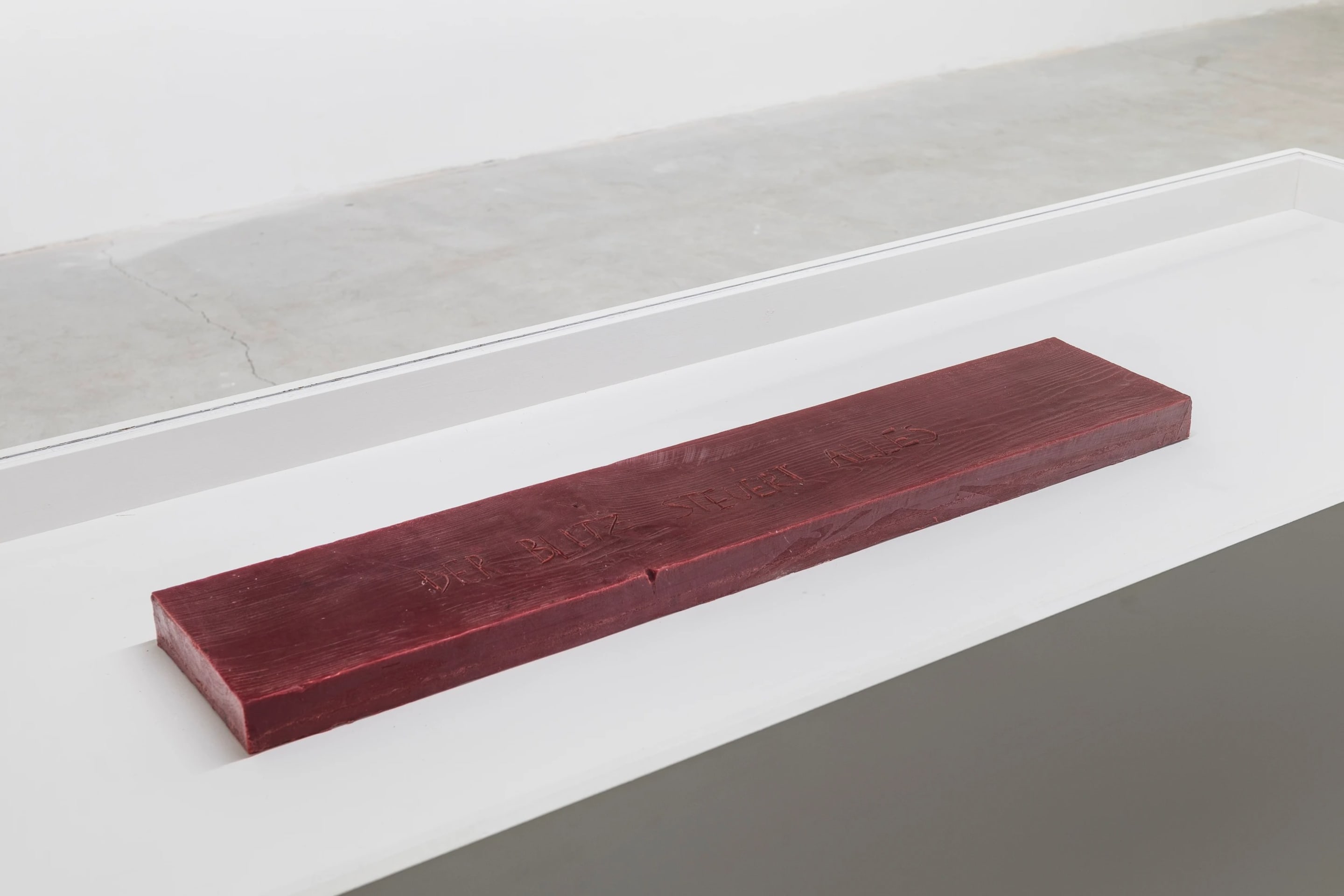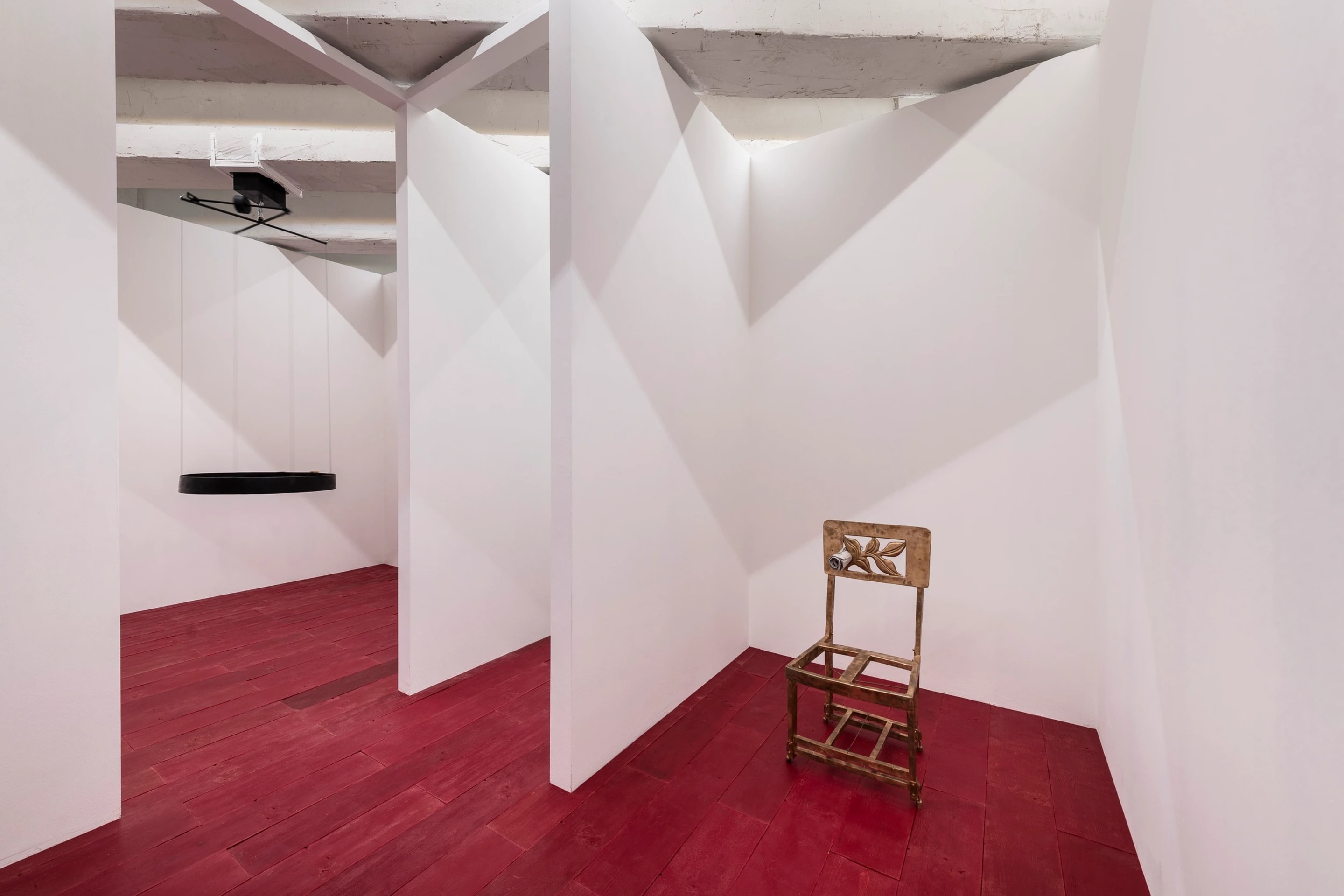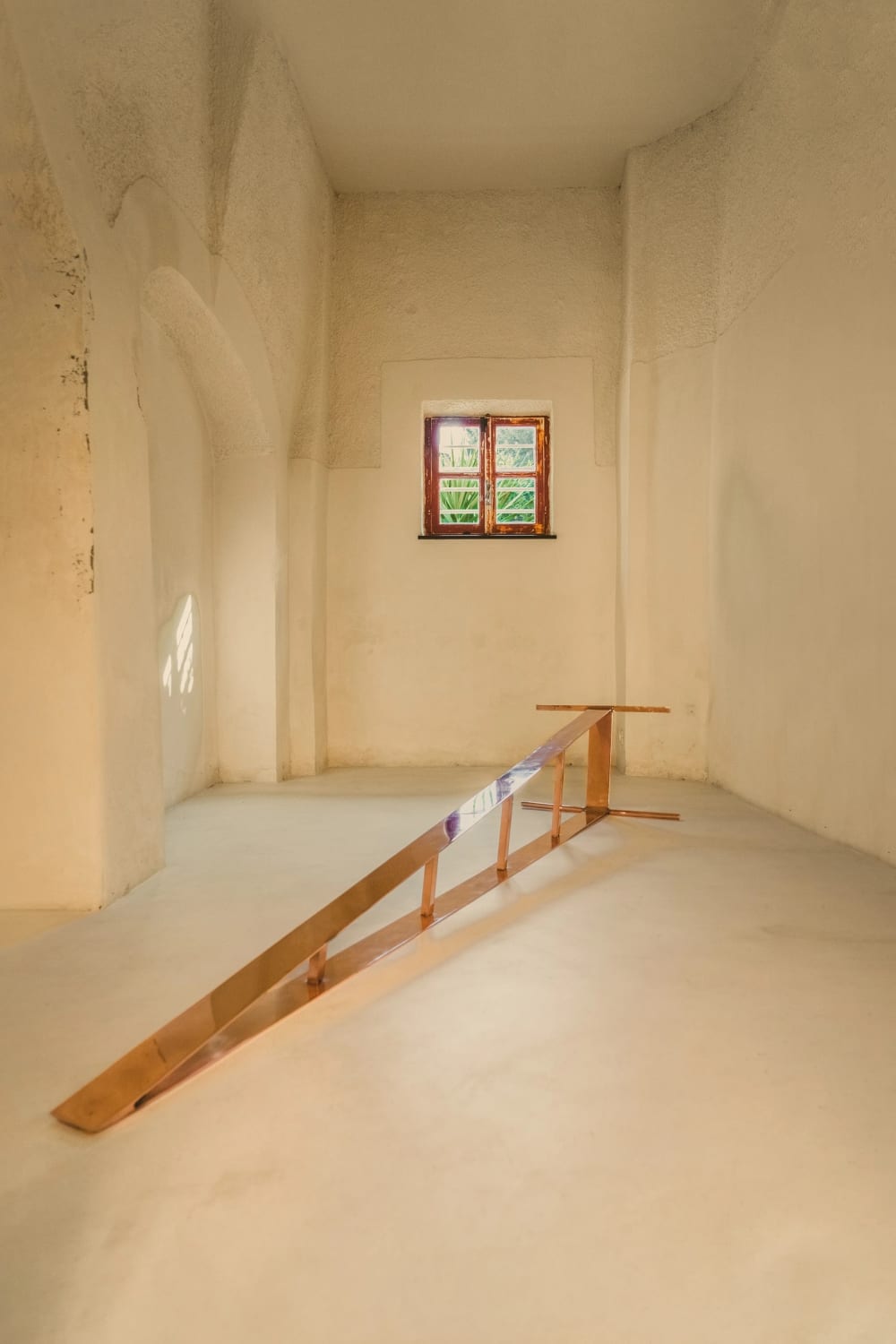
In ancient Greek, "γέρων" ("geron") means "elderly." To translate this term into Russian, the word стáрец ("starec") was chosen, which referred to the ancient Slavic ecclesiastical term starĭtsĭ ("elderly"), itself derived from starŭ (with the same meaning of "old").
In itself, γέρων did not so much denote a chronological age but rather an intellectual and spiritual one. Especially from the Eastern Christian monasticism of the 4th century onwards, an elderly ecclesiastic, hermitic, silent in their prayer, focused on directing their own and others' gaze towards God, upon entering the community, became a spokesperson and simultaneously a confidant, an assurance of trust almost touched by the Holy Spirit.
This dimension of the Greek γέρων is then paraphrased in Russian. The starec (often transliterated as starets) becomes the word used in Russia to indicate those elders who, within Orthodox monasteries, assumed the role of spiritual guides, fathers of faith always ready to show the way and provide advice. Their life is prayer, eremitism, and asceticism: this extreme choice and the profound belief that animates them is said to bestow special gifts upon them - the ability to perceive the right direction, to heal and alleviate pain, to prophesy, and to understand the intimacy of those who approach them with devotion. Thus, the starec tends to inspire believers through the example they set of virtue and spiritual peace. Simultaneously, their uniqueness is affirmed by the believers themselves, for they are not appointed by external personalities or entities, but by the very authentic and sincere devotion to faith and spirit.
There have been startes who, over the years, have become true points of reference, being elected as life guides and being granted far-reaching powers. Those figures inspired, among others, the character of Zosima in Dostoevsky’s Ithe Brothers Karamazov. The author himself writes: "The starets is someone who takes your soul and your will and assimilates them into their own soul and will [...] to the point of being able to eventually attain, through a life of obedience, absolute freedom, that is, freedom from one's own 'self,' and thus escape the fate of those who have lived an entire life without finding themselves."
Separated from all, he is united with all is one of the messages that Zosima adopts and imparts to the Karamazov brothers. Starting here, Francesco Arena embarks on the creation of the new site-specific work designed for Aedicula.
Titled Lo Starec, it consists of an obtuse-angled copper triangle. When it's laid flat on the longer side, it can stand upright with stability. If lifted and placed on the shorter side, it requires a counterweight to prevent it from falling, as the center of gravity is unbalanced. The message inscribed on the bottom becomes accessible only if someone commits to it, correcting its distortion, and taking on its impermanence.
When a person supporting the sculpture, a temporary starec, inhabits Aedicula, then the triangle can be lifted up to reveal a message (separated from all, he is united with all). The phrase is engraved on the longer side of the outwork, placed on the ground. For the rest of the time, the artwork goes back to being a silent guardian of a message that, without an interlocutor, lacks eyes to be seen and a voice to be offered to the world.
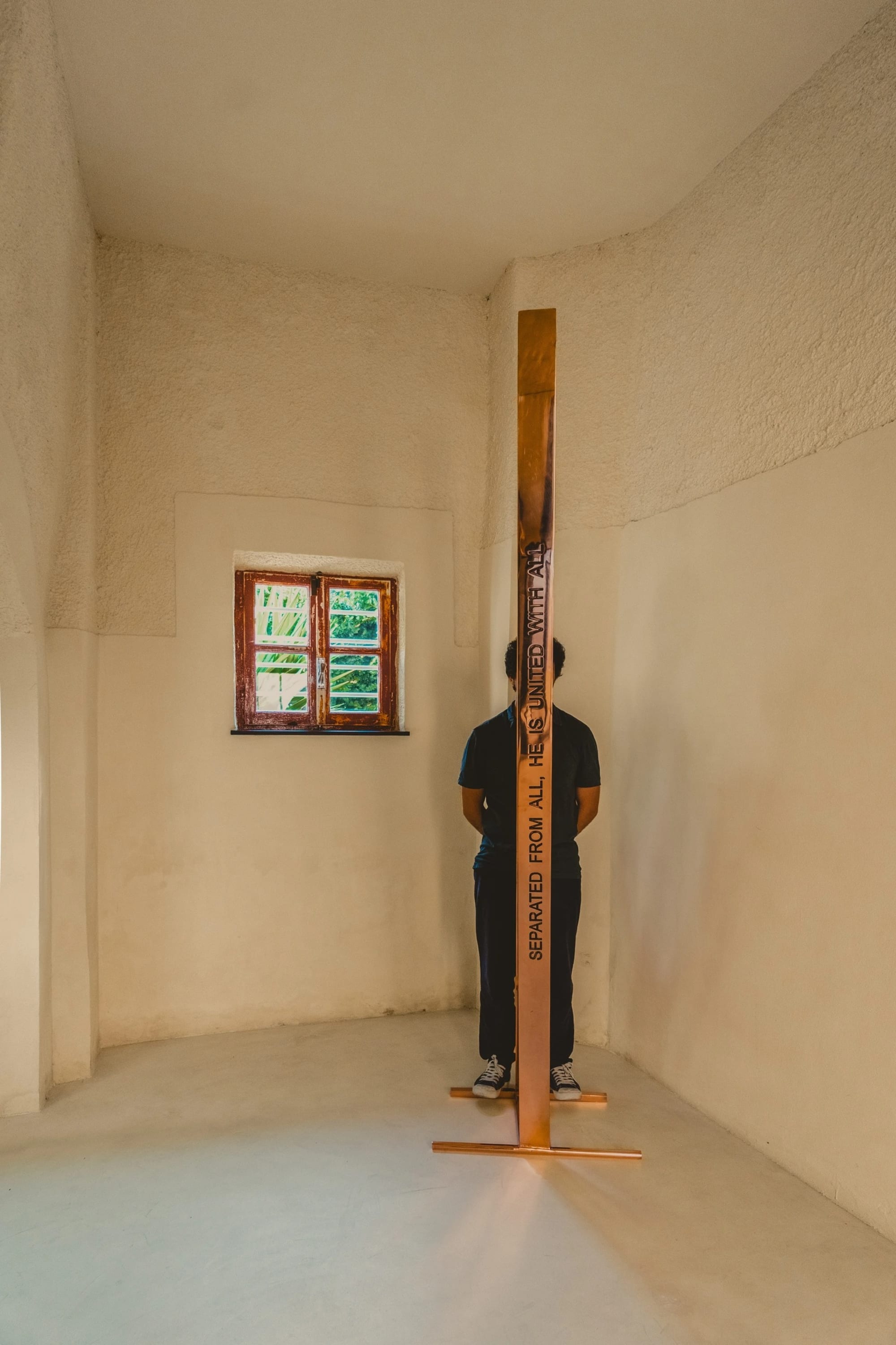
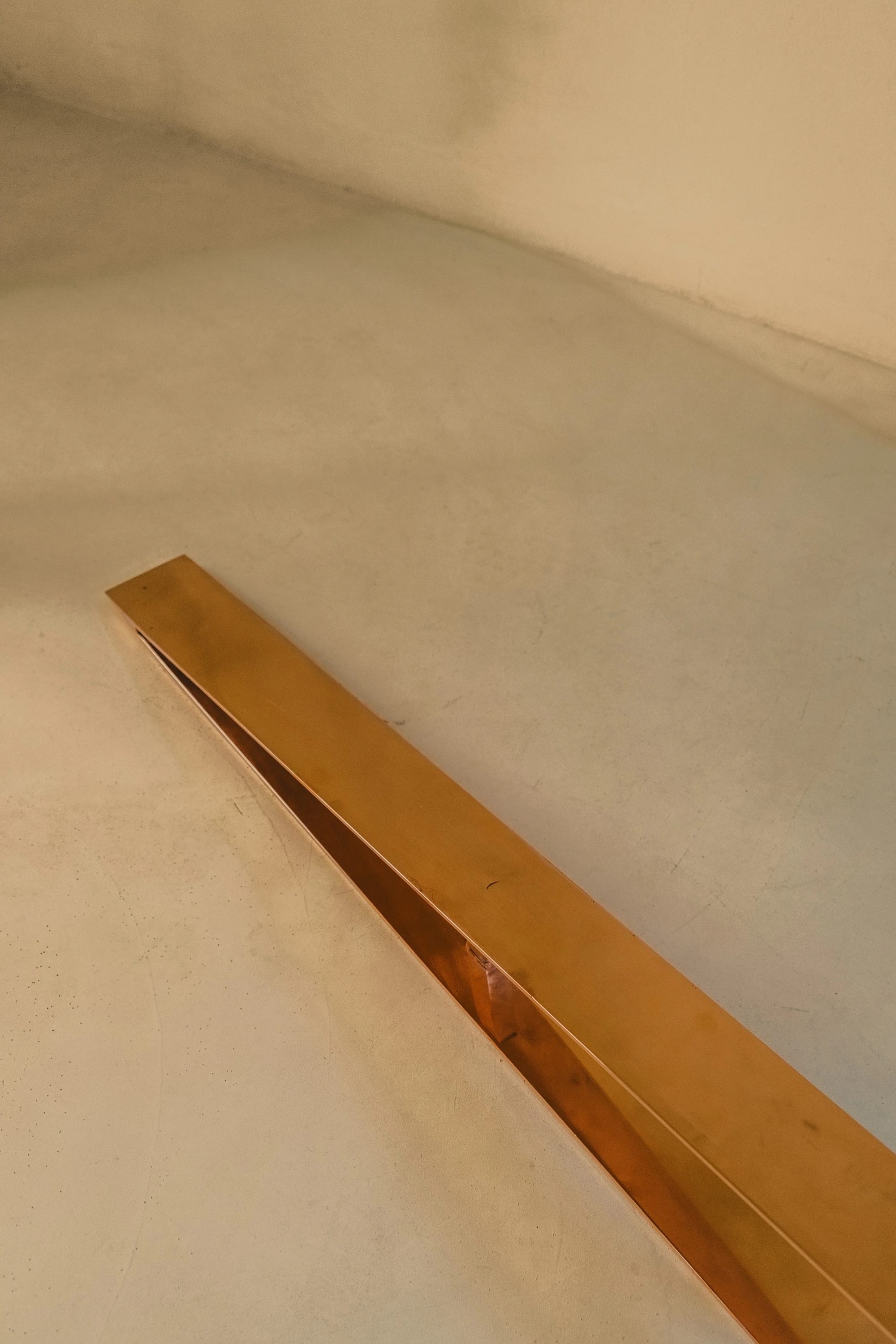
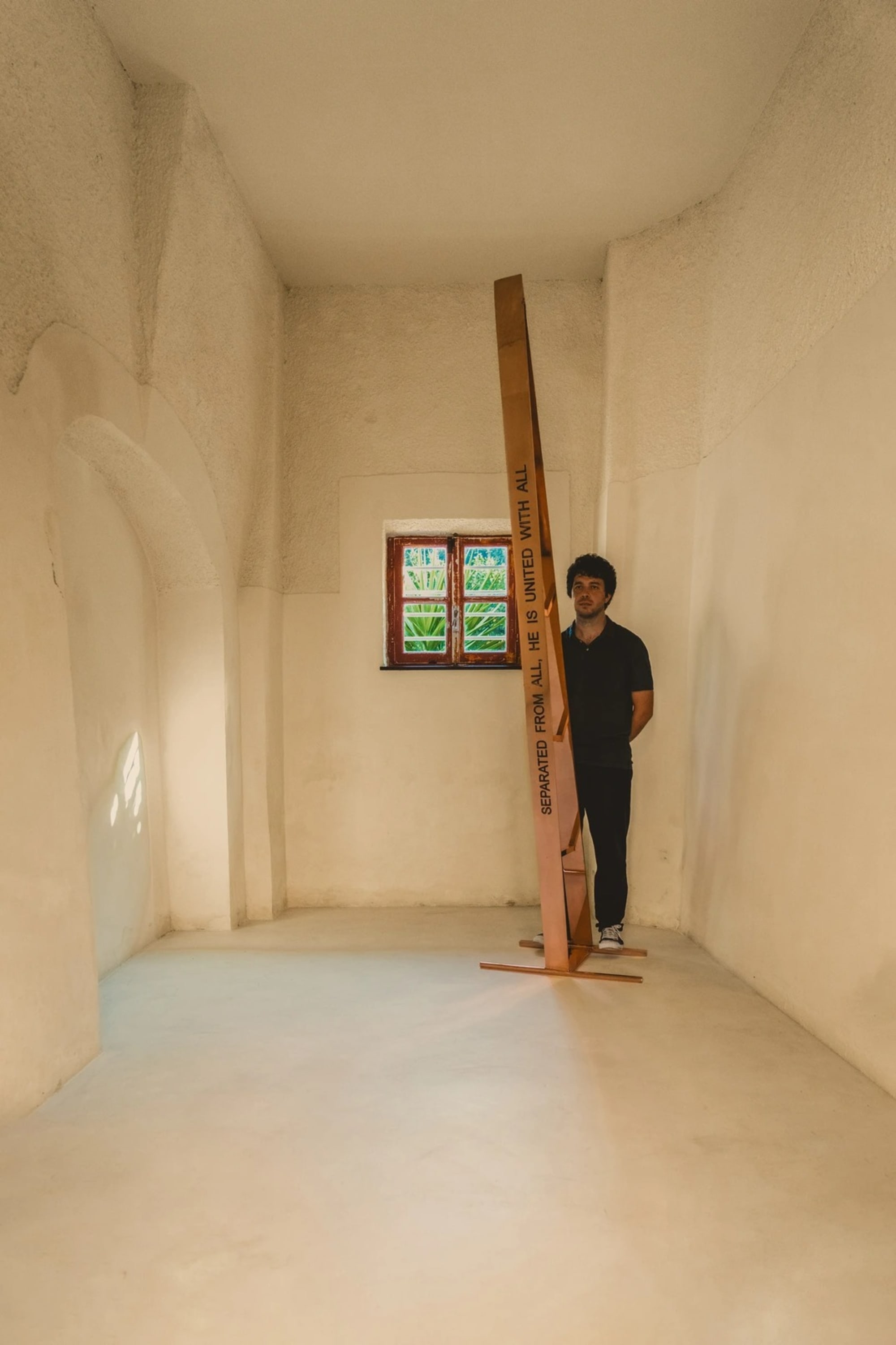
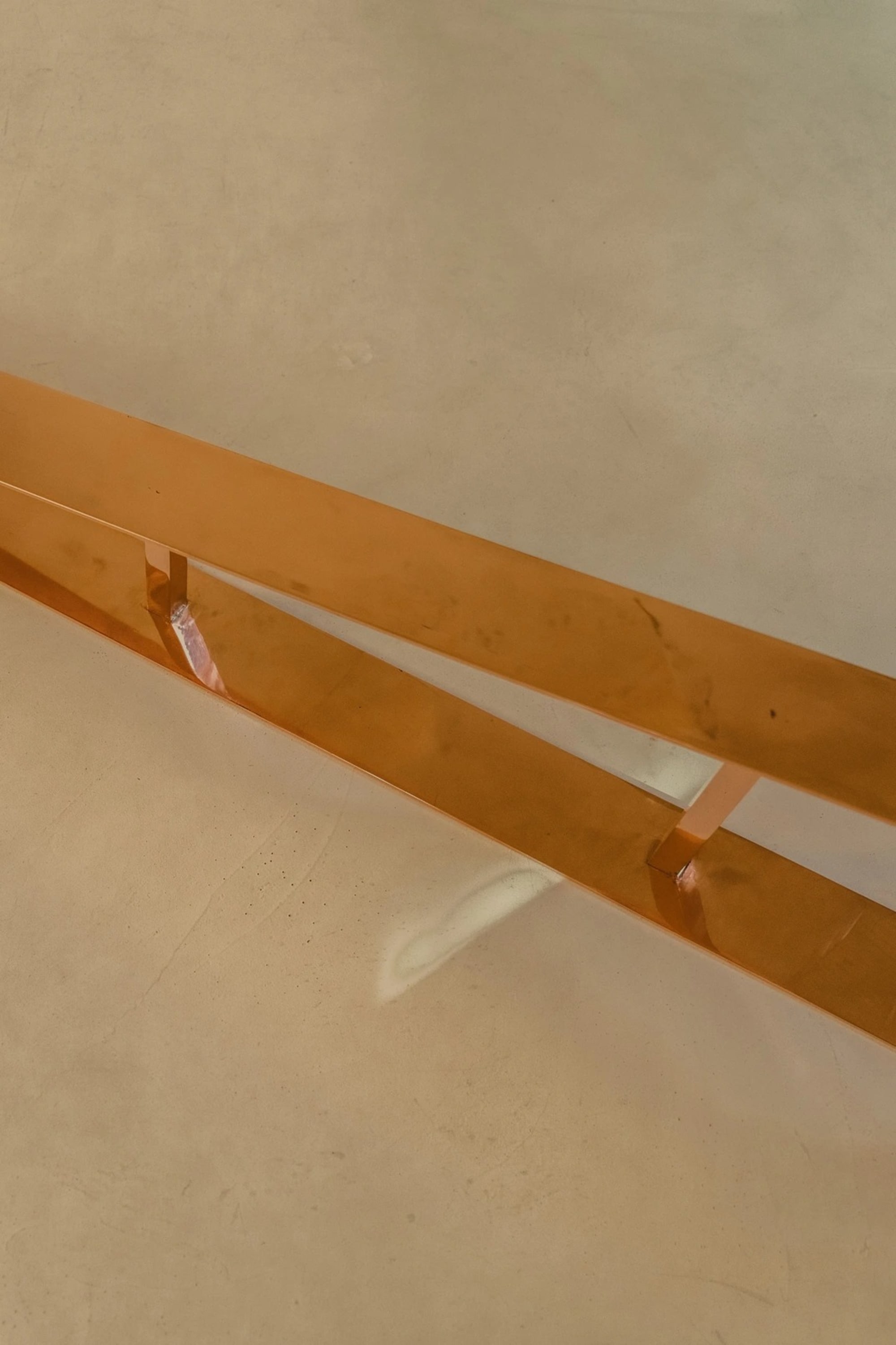
Francesco Arena presented in the small space of Aedicula Raffaella Cortese in Albisola Superiore a new copper sculpture that lives only when it is accompanied by a person holding it up. If no one takes charge of its unbalanced center of gravity, it lies on the ground without showing the writing that hides under the long side. Separated from all, he is united with all is a quote from The Brothers Karamazov; it is a sentence spoken by Zosima to the two. Zosima is a starec, a sage who assumes the role of a spiritual guide, a father of faith always ready to show the way and give advice. And it is precisely this figure – which has been popular since the Eastern Christian monasticism of the fourth century – that inspired Arena to think of the new work, which takes precisely the title Starec. It is a copper triangle with an obtuse angle, which can stand stably when stretched out on its long side, but needs a counterweight to keep it from falling when lifted up and resting on its short side. The message on the bottom is therefore only usable if someone makes a commitment to it, correcting this distortion by taking on its impermanence.
We asked the artist some questions.
You can read the conversation here.
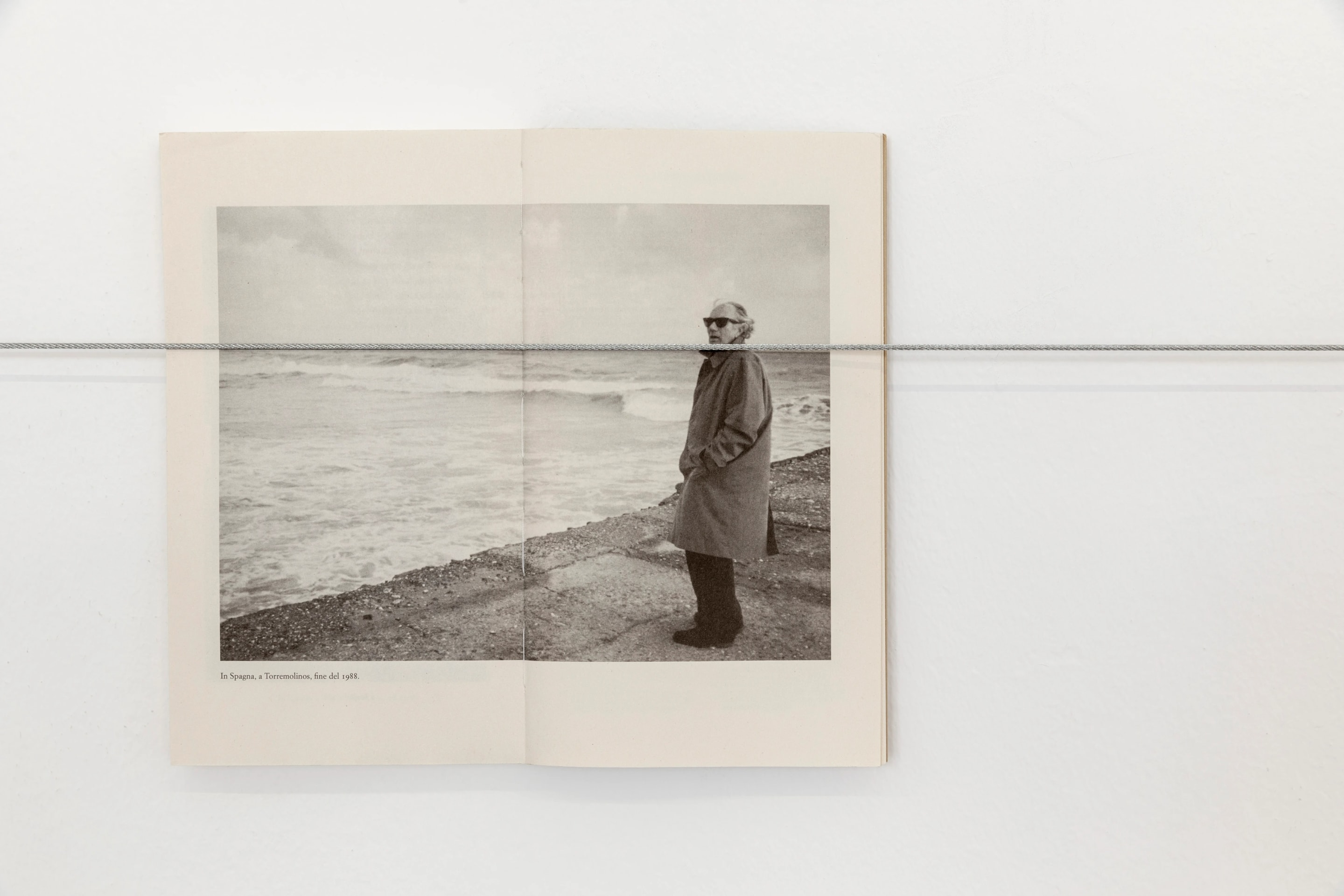
If one tried to summarize a large part of Francesco Arena’s work into a formula, it would be as follows: numbers that take on form. From a linguistic point of view his work can be read as a development, a personal “derivation”, of sculptural processes that arise from the geometric shapes typical of Minimal art and from the more archetypal ones of Arte Povera. But from a thematic point of view his pieces are often the translation of formulae and numbers linked to private and personal facts.
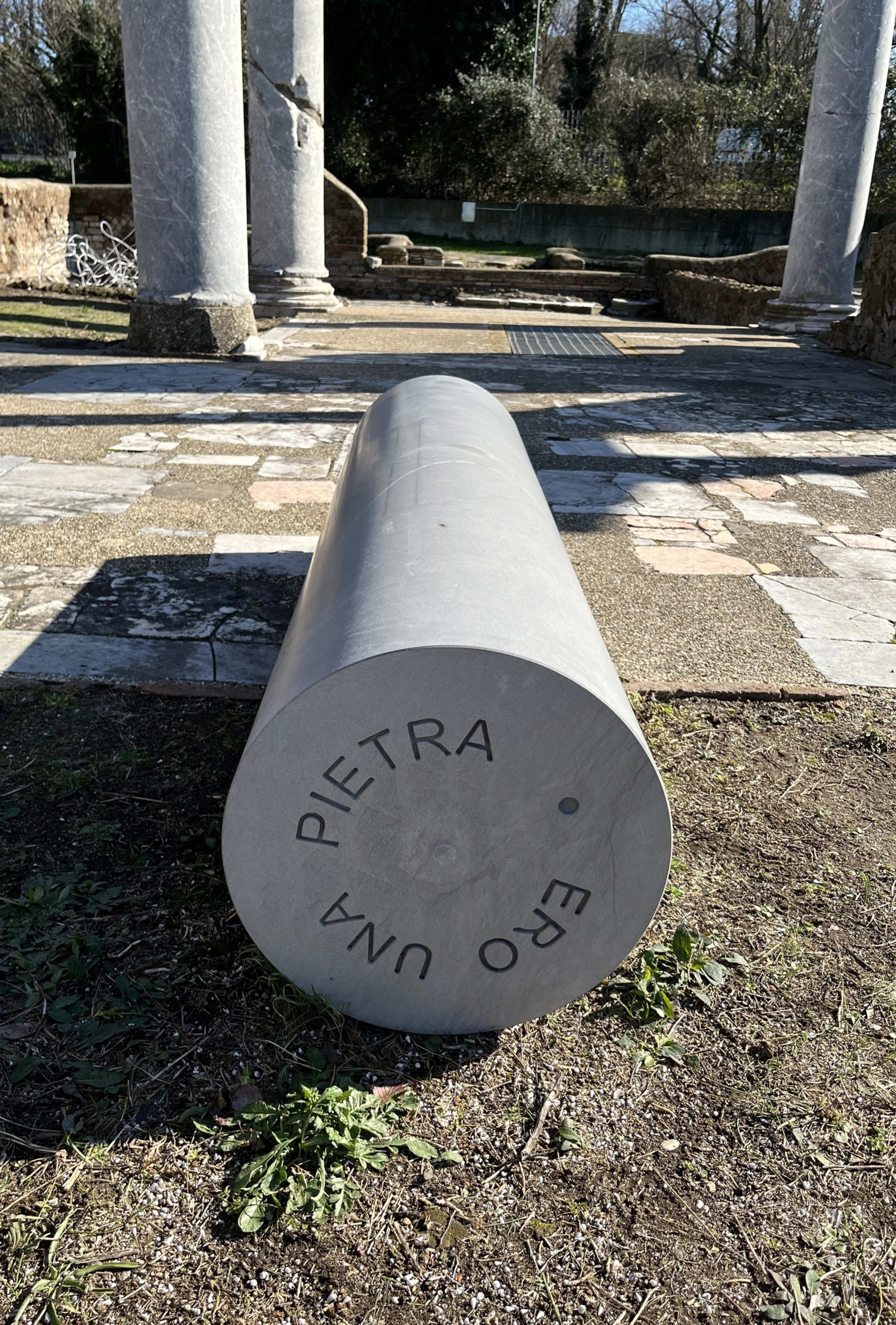
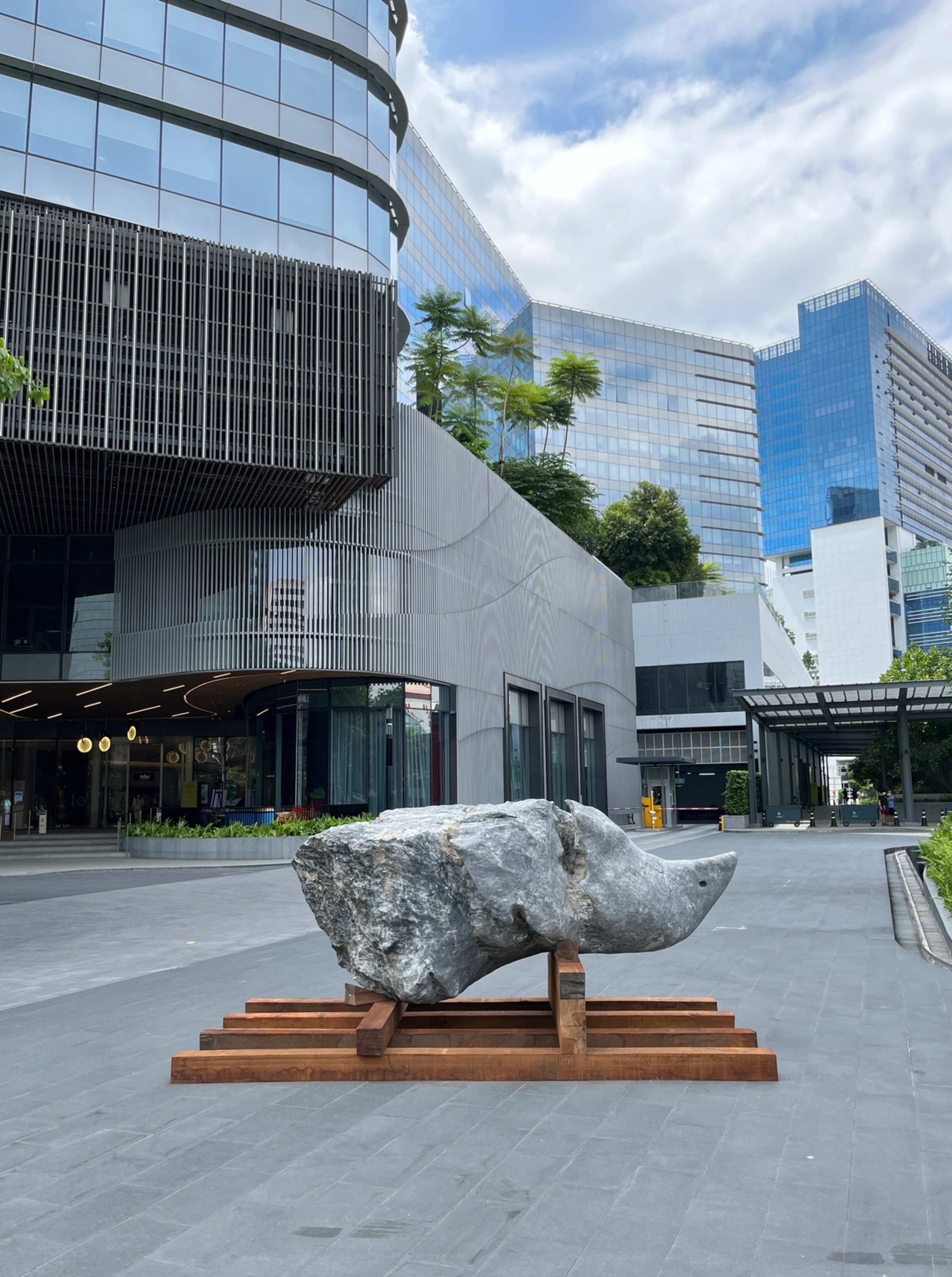
Arena’s research moves along two tracks: that of collective history, mainly national, and that of personal history. These form a sort of two lines that touch, overlap, cross each other. In his performances, installations and sculptures, the narrative creates the objects. They can be everyday objects such as diaries, cigars, living room furniture, or made out off traditional sculptural materials, such as marble, slate, bronze. Arena always imposes at the beginning a rule to be followed, a fact that remains a fixed point in the piece’s production process: the weight of a boat used by illegal immigrants reaching the coast of Lampedusa, the distance travelled by the anarchist Pinelli in his last day as a free man in Milan, the volume of a crater made by a bomb explosion. These are starting points that determine the form, the dimensions and at times even the materials of the piece: “Facts are a wilderness where different views confront and oppose each other; facts interest me as units of measurement around which to build a sculpture... a weight, a distance or a surface inform the work and determine its form or dimensions.” he said. The facts chosen by Arena often come from the reservoir of personal history, but also from collective memory, which was initially focused above all on Italy, but which has now opened up to global situations and events.
